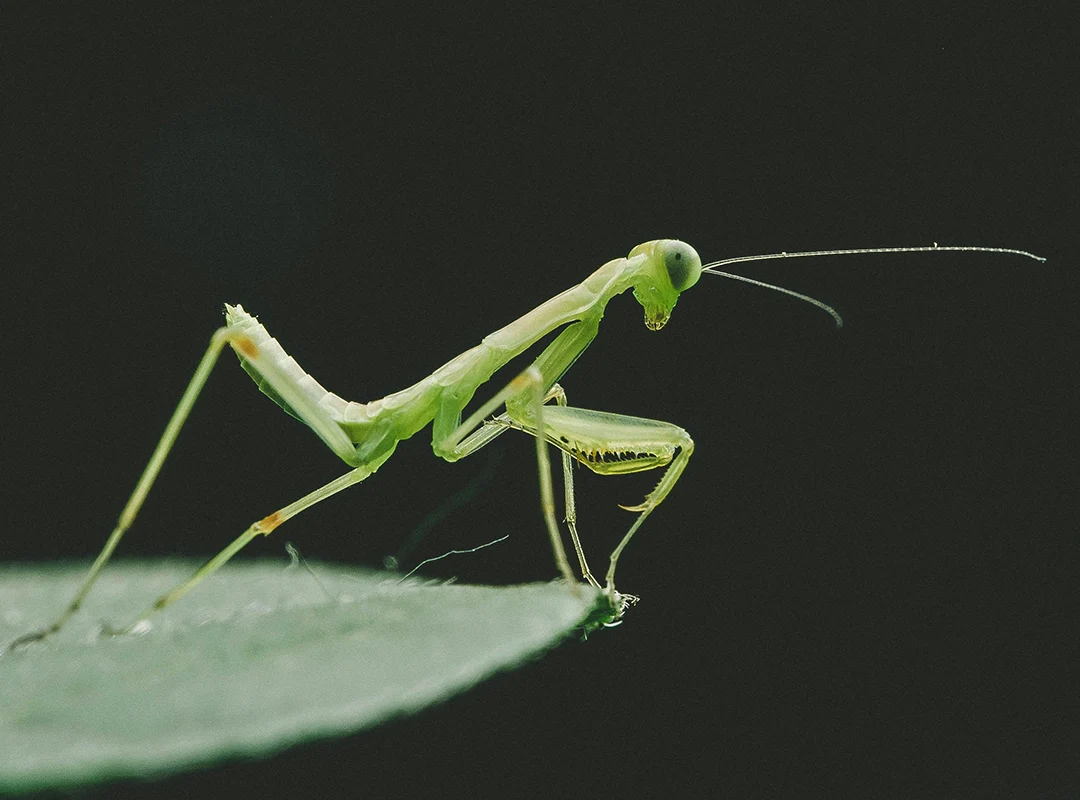
How The Praying Mantis is Good

You’ve probably heard of and likely seen a praying mantis before. You may have even heard the legend that they’re good luck. We’re not so sure about that part (we want to believe!), but what we do know is that the praying mantis does bring a ton of beneficial things to the table, especially for farmers and gardeners. So what makes Praying Mantises so beneficial?
What is a Praying Mantis?
The Praying Mantis (or Mantis religiosa) is a medium sized insect, typically green or brown in color, well known for their unusual posture- prominent, bent and angled- that makes it look as though they are “praying”-- which is where they get their non-scientific name from. In North Carolina, the most common type of Praying Mantis is the aptly named Carolina Mantis. You’ve almost definitely seen some of these bugs lurking around your yard before.
Praying Mantises are absolute experts at camouflaging themselves; they are expert hunters, in part because of this ability to camouflage in almost any setting. Don’t believe us? Check this out:
You can see that the pictured Mantis takes on many of the color qualities of the object that it is perched on. These insects are majorly talented at camouflage.
How Praying Mantises Are Beneficial
Ok, so it’s obvious that we’re pretty into Praying Mantises. They’re just so...cool. But the point of this post is to talk about the benefits that they provide to people right? Exactly! So enough gushing, let’s talk about what makes these little fellas so great:
They Have a Big Appetite...
Praying Mantises are a hungry bunch, and they eat a giant range of different pests including:
- Roaches
- Flies
- Mosquitoes
- Moths
- Aphids
- Small Rodents
- Birds
- Snakes
...Which Makes Them Great Organic Pest Control
Because Praying Mantises will go after a ton of different types of pests, they can act as an effective form of organic pest control. They’ve been heralded as helpers to both farmers and gardeners because they de facto “protect” crops, both commercial and personal. Plus, their breeding cycle is closely aligned with peak growing season in North Carolina; it’s a match made in heaven!
Considering Mantis religiosa helps take care of some of the nastier pests that will infest homes and lawns (like mosquitoes, roaches and small rodents) they also have a ton of utility in acting as a sort of first line of defense against these types of pests.
Attracting Praying Mantises
So now that we know Praying Mantises are largely good pests (in fact calling them pests at all may be a stretch), you might be wondering how you can attract them to your property. There are a few ways:
- Grow Mantis-attracting plants. Marigold, raspberry canes, dill, fennel and angelica are all types of plants/herbs that can attract Praying Mantises (and ladybugs, another beneficial insect, for that matter).
- Grow shady, protective plants that are low to the ground. Beneficial insects need places to hide from predators and to grab some shade.
- Try using artificial insect attractants to draw in beneficial insects.
If you do decide to use some of these methods in an attempt to attract a Carolina Mantis, do so cautiously; while these attractants can attract good insects, some of them can also attract the not-so-good ones. Which leads us to our last point…
Don’t Rely On Praying Mantises Too Much
While the Praying Mantis certainly has many benefits, they can’t act as a substitute for professional pest control. Having a Praying Mantis presence is a great benefit, but the reality is even an army of them aren’t going to be able to take care of a major infestation. For that, you’ll need a professional pest control company, and A-1 Pest Control is here to help. We offer prevention and elimination services for the following pests identified in this post:
- Mosquito control
- Rodent control
- Bird control
- Wildlife control (including snakes)
Wondering what other pests provide some positive benefits? Read our recent blog on how spiders are actually good (sometimes)!
